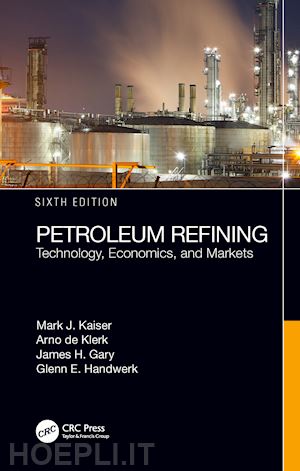Mark J. Kaiser is Marathon Professor and Director of the Research and Development Division at the Center for Energy Studies at Louisiana State University, Baton Rouge, where he has worked since 2001. His research interests cover the oil, gas, and refining industry, cost estimation, economic evaluation, fiscal analysis, infrastructure modeling, and regulatory policy. Dr Kaiser has authored over 200 academic publications and has secured grants of several million dollars over his career. He is the author of four research monographs: Offshore Wind Installation and Decommissioning Cost Modeling (Springer-Verlag 2012), The Offshore Drilling Industry and Rig Construction in the United States (Springer-Verlag 2013), Offshore Service Industry and Logistics Modeling in the Gulf of Mexico (Springer-Verlag 2015), and Decommissioning Forecasting and Operating Cost Estimation (Elsevier 2019). He has also developed several commercial reports on offshore decommissioning, and serves on the editorial boards of over two dozen academic journals, his favorites being Energy, Journal of Petroleum Science and Engineering, and Petroleum Science and Technology. Dr. Kaiser occasionally consults and serves as technical expert to government agencies and private firms, and in the first part of his career worked in the fields of convex geometry, geometric optimization, and computational metrology. Dr. Kaiser received a Ph.D. degree in industrial engineering in 1991 from Purdue University. Arno de Klerk is the Nexen Professor of Catalytic Reaction Engineering, and the NSERC/Nexen-CNOOC Ltd Industrial Research Chair in Field Upgrading and Asphaltenes Processing at the University of Alberta, Canada. He grew up in South Africa, where he spent part of his early career as a forensic analyst, and from 1995 to 2008 worked as a process engineer in the Research and Development Center of Sasol in refinery conversion processes and catalysis. His refining work focused mainly on transportation fuel and petrochemical production starting from synthetic oil from Fischer–Tropsch synthesis and oil from coal pyrolysis. It led to the monographs Catalysis in the Refining of Fischer–Tropsch Syncrude (Royal Society of Chemistry 2010) with Edward Furimsky, and Fischer–Tropsch Refining (Wiley-VCH 2011). In 2009, he took up a position in the Department of Chemical and Materials Engineering at the University of Alberta working on the conversion of heavy oils and oil sands bitumen, and remaining active in the fields of synthetic fuel production and refining. He is editor-in-chief of the journal Applied Petrochemical Research (Springer). He holds degrees in analytical chemistry and in chemical engineering from the University of Pretoria, and is a registered professional engineer in Alberta. James H. Gary was born in 1918 and lived 93 years. He graduated from Virginia Polytechnic Institute in 1942, served in the army in New Guinea during World War II, married in 1945 upon his return to the states, and obtained a Master of Science degree from Virginia Polytechnic Institute, where he learned to like teaching as a teaching assistant. He took a job with Standard Oil of Ohio in Cleveland so he could study for his doctorate at night, and completed his PhD at University of Florida before returning to Standard Oil of Ohio for two years. Jim was an Assistant Professor at University of Virginia from 1952-1956, and an Associate Professor at University of Alabama from 1956-1960. In 1960, Dr. Gary came to the Colorado School of Mines as Professor and Department Head of Chemical Engineering and Petroleum Refining, a position he held until 1972. In 1972, Dr. Gary served as Vice President for Academic Affairs, and in 1979 returned to the department and taught until his retirement in 1986. Jim was principal investigator for research projects on nitrogen and sulfur removal from liquid hydrocarbons and processing of heavy oils, and also organized the Colorado School of Mines Annual Oil Shale Symposium. Gary wrote several dozen publications in technical journals and held many patents in fuels and fuels processing. Jim consulted for refining companies and regularly taught a popular short course on petroleum refining. Jim was an inspiration to his many students and colleagues over the years. Glenn E. Handwerk graduated from Lehigh University in 1948 with a degree in Chemical Engineering. His first job was with Gulf Oil working in gas processing plants in Tulsa, Oklahoma, and Hobbs, New Mexico. After four years he went on to a position with Blawknox in Pittsburgh, Pennsylvania, and then to Stearns–Rogers in Denver, Colorado, working in process design. He worked on numerous gas plants and refineries in both Canada and the U.S., and became Chief Process Engineer for Stearns by the mid-1960s. In 1967, Glenn left Stearns-Rogers to become a consultant in gas processing and refining, and became widely known and respected in the industry. He had many clients over the years, including Dome Petroleu











